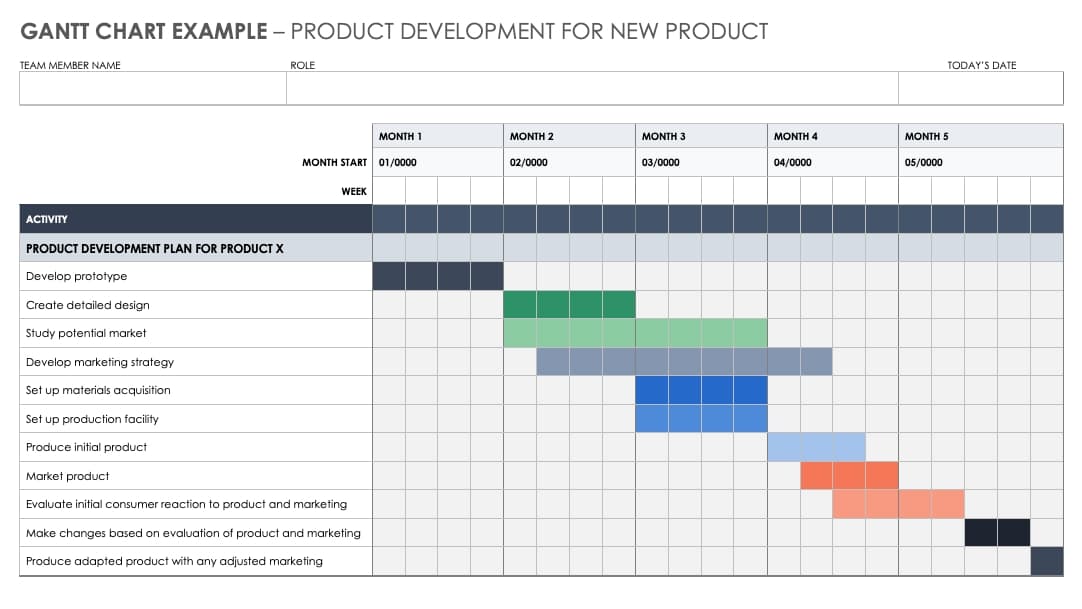In today’s fast-paced business landscape, effective team collaboration is the cornerstone of success. Organizations rely on collaborative efforts to bring projects to fruition, innovate, and stay competitive. With teams often spread across various locations and time zones, the need for efficient tools and processes to facilitate collaboration has never been greater. This is where project management systems step in, playing a pivotal role in orchestrating teamwork, improving communication, and ensuring that projects are executed seamlessly. In this article, we will delve into the crucial role that project management systems play in fostering effective team collaboration.
The Evolution of Team Collaboration
Collaboration has always been a fundamental aspect of human progress, but the ways in which we collaborate have evolved significantly over time. Traditional forms of collaboration involved face-to-face meetings, paper-based documents, and physical project management boards. While these methods were effective to some extent, they had limitations in terms of scalability, speed, and accessibility.
The digital revolution transformed collaboration by introducing technology-driven solutions that transcended geographical boundaries. Email, instant messaging, and early project management tools were among the first steps toward modern collaborative work environments. However, these tools often operated in isolation, creating silos and inefficiencies.
Project management systems emerged as a comprehensive solution to address these challenges. They are designed to streamline project workflows, enhance communication, and provide a centralized hub for collaboration, making them a vital component of today’s dynamic work environment.
The Anatomy of Project Management Systems
Before delving into the role of project management systems in team collaboration, it’s essential to understand their core components and functionalities:
1. Task Management:
Project management systems allow teams to create, assign, and track tasks. Team members can see their individual responsibilities, deadlines, and task dependencies, promoting accountability and transparency.
2. Document Sharing and Storage:
These systems provide a centralized repository for documents, files, and resources related to the project. This ensures that all team members have access to the most up-to-date information, reducing confusion and duplication of work.
3. Communication Tools:
Integrated communication tools, such as chat, discussion boards, and comment threads, enable team members to communicate in real-time. This facilitates quick decision-making and eliminates the need for lengthy email chains.
4. Project Planning and Scheduling:
Project management systems allow teams to create project timelines, set milestones, and allocate resources efficiently. This helps in managing project progress and ensuring that everyone is aligned with the project’s goals.
5. Reporting and Analytics:
These systems provide reporting capabilities, allowing project managers to track key performance indicators (KPIs) and assess project health. This data-driven approach helps in making informed decisions and optimizing project strategies.
The Role of Project Management Systems in Team Collaboration
Now, let’s explore how project management systems contribute to effective team collaboration:
1. Centralized Information Hub:
Project management systems serve as a central repository for project-related information, including documents, tasks, schedules, and discussions. This centralized hub ensures that all team members have access to the same information, reducing confusion and preventing the loss of critical data. Whether team members are working in the same office or remotely, they can easily access the latest project updates, fostering a sense of unity and alignment.
2. Real-Time Collaboration:
Modern project management systems facilitate real-time collaboration by offering chat, comment threads, and discussion boards. Team members can communicate instantly, share ideas, ask questions, and provide feedback within the context of specific tasks or projects. This immediacy enhances communication and decision-making, making it easier for teams to resolve issues and move projects forward.
3. Task Transparency and Accountability:
Project management systems empower teams with clear task assignments, deadlines, and priorities. Every team member knows their responsibilities and can track their progress. This level of transparency promotes accountability within the team, as tasks and their statuses are visible to everyone. It also reduces the likelihood of misunderstandings or disputes related to work assignments.
4. Efficient Resource Allocation:
By offering project planning and scheduling features, project management systems assist teams in efficiently allocating resources, such as manpower, time, and budget. Teams can visualize project timelines, identify potential bottlenecks, and adjust resource allocation accordingly. This prevents overburdening team members and ensures that resources are used optimally.
5. Streamlined Workflows:
Project management systems allow teams to define and automate workflows. Workflows can encompass task dependencies, approval processes, and notifications. This automation reduces manual intervention, minimizes errors, and ensures that tasks progress smoothly through predefined stages. Streamlined workflows save time and promote consistency in project execution.
6. Data-Driven Decision-Making:
Project management systems provide reporting and analytics tools that enable data-driven decision-making. Project managers can monitor KPIs, assess project performance, and identify areas that require attention or improvement. Data insights guide teams in making informed choices to optimize project strategies and outcomes.
7. Collaboration Across Borders:
In today’s globalized work environment, teams often span multiple geographical locations and time zones. Project management systems transcend geographical boundaries, enabling seamless collaboration among remote and distributed teams. Regardless of where team members are located, they can collaborate effectively, share information, and contribute to project success.
Case Study: Trello
Trello is a popular project management system that exemplifies the role of such systems in team collaboration. It utilizes a visual board-and-card interface, making it easy for teams to manage tasks and projects. Here’s how Trello contributes to effective team collaboration:
Visual Workflow: Trello’s boards and cards provide a visual representation of projects, allowing team members to see the entire workflow at a glance.
Task Management: Each card in Trello represents a task, and team members can easily assign tasks, set due dates, and add descriptions or attachments.
Collaboration: Trello offers comment sections on each card, facilitating discussions and collaboration around specific tasks. Team members can tag colleagues, attach files, and communicate in real time.
Customization: Trello allows teams to customize boards to fit their unique workflows. This flexibility ensures that the tool adapts to the team’s needs.
Challenges and Considerations
While project management systems offer numerous benefits for team collaboration, there are some challenges and considerations to keep in mind:
User Adoption: Introducing a new project management system to a team requires proper training and user adoption strategies. Some team members may initially resist change, so effective onboarding is crucial.
Integration: Project management systems should seamlessly integrate with other tools and software that the team uses. Compatibility and integration capabilities are essential for ensuring a smooth workflow.
Data Security: Protecting sensitive project data and ensuring compliance with data privacy regulations is critical. Teams must implement security measures to safeguard information within the system.
Scalability: The chosen project management system should scale with the team’s growth. It should accommodate an increasing number of projects, users, and resources without compromising performance.
Customization: While customization is valuable, excessive complexity can hinder user experience. Striking the right balance between flexibility and simplicity is key.
Conclusion
Effective team collaboration is the lifeblood of modern organizations. As teams become more geographically dispersed and projects grow in complexity, the need for robust collaboration tools becomes paramount. Project management systems serve as a linchpin in this regard, offering a comprehensive suite of features and functionalities that facilitate collaboration, streamline workflows, and promote transparency.
By centralizing information, enabling real-time communication, enhancing task management, and providing data-driven insights, project management systems empower teams to work cohesively, regardless of their physical locations. As the business landscape continues to evolve, the role of project management systems in effective team collaboration remains indispensable, ensuring that teams can navigate challenges, seize opportunities, and achieve their goals in an increasingly interconnected and fast-paced world.









